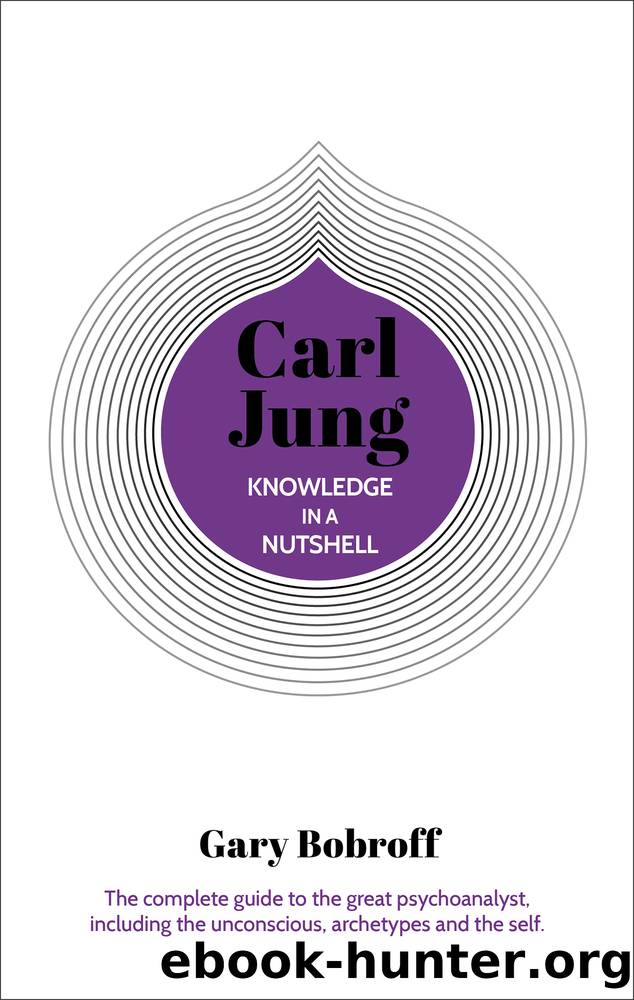Carl Jung: The complete guide to the great psychoanalyst, including the unconscious, archetypes and the self by Gary Bobroff

Author:Gary Bobroff
Language: eng
Format: epub
Tags: Psychology
ISBN: 9781839403989
Publisher: Arcturus Digital Limited
Published: 2019-10-30T15:28:02+00:00
Extraverts and introverts
Extravert means outward-turning, and Introvert means inward-turning. These attitudes, as they are called, describe the way in which our psychic energy moves naturally, either towards the outer world or towards the inner. In common usage today, Extravert refers to someone who is outgoing and talkative – energized through social engagement; while Introvert, generally speaking, refers to someone who is withdrawn or quiet socially, and social engagement may tire them out. The Extravert’s energy goes to objects (people and things) of the outer world; the Introvert’s energy goes to the inner world. Both are seen as healthy ways of operating; for Jung, both approaches are normal. We all have some energy going to both, but have a dominant preference.
Katharine Cook Briggs and her daughter Isabel Briggs Myers used Psychological Types to develop the Myers-Briggs Type Indicator (MBTI™) – a psychological instrument used to help identify how best to utilize women who were coming into the industrial workforce during World War II. Studies of results from the MBTI™ generally described the ratio of Introverts to Extraverts as 1:1 (evenly split), or in some populations 6:4. In her book Quiet: The Power of Introverts in a World That Can’t Stop Talking, Susan Caine found that 33–50% of the American population are Introverts.
The Extravert is gregarious: the classic example is the comedian who is more and more energized from the crowd as the evening’s performance goes on. They come off stage and are lit for a long time afterwards; they crave stimulation to calm down. The Introvert restores through downtime and quiet. Jung was the classic Introvert. His attention was clearly naturally drawn inwards (as was Adler’s). Concentration is on outer objects for Extraverts, and on inner ones for Introverts.
Biological studies show that there are types of people for whom external stimulation is calming and others for whom too much external stimulation is overwhelming. Smoking, coffee and other stimulants tend to soothe Extraverts. Notice for yourself whether you see outgoing people getting calmed by stimulation. Introverts often find stimulants overwhelming. That biological division would seem to echo the physiological existence of Jung’s Introvert–Extravert category.
Introvert and Extravert represent types of characteristic structuring of consciousness. But ‘these attitudes are not meant to characterize behaviour. One can meet contemplative monks who are extravert and businessmen who are introverted.’67 All of us can display times of introversion and extraversion, but as types, this basic division is one of the easiest for us to see.
Introvert and Extravert are terms that have a well-recognized understanding in our world today. Virtually every comprehensive model of personality has some category similar to it. However, when we look closely at how Jung used those terms, there seem to be several different aspects merged into one. The Extraverts are energized by the outer world, socially oriented and not reflective; the Introverts are introspective, socially averse and get energy from time alone. Are individuals always these three together?
Jung writes that the Introvert ‘has no love of enthusiastic get-togethers. He is not a good mixer.
Download
This site does not store any files on its server. We only index and link to content provided by other sites. Please contact the content providers to delete copyright contents if any and email us, we'll remove relevant links or contents immediately.
The Art of Thinking Clearly by Rolf Dobelli(8836)
The 5 Love Languages: The Secret to Love That Lasts by Gary Chapman(8481)
Mindhunter: Inside the FBI's Elite Serial Crime Unit by John E. Douglas & Mark Olshaker(7827)
Becoming Supernatural by Dr. Joe Dispenza(7099)
Nudge - Improving Decisions about Health, Wealth, and Happiness by Thaler Sunstein(6629)
The Road Less Traveled by M. Scott Peck(6626)
Enlightenment Now: The Case for Reason, Science, Humanism, and Progress by Steven Pinker(6402)
Win Bigly by Scott Adams(6306)
Mastermind: How to Think Like Sherlock Holmes by Maria Konnikova(6224)
The Way of Zen by Alan W. Watts(5787)
Factfulness: Ten Reasons We're Wrong About the World – and Why Things Are Better Than You Think by Hans Rosling(4013)
The State of Affairs by Esther Perel(3918)
Gerald's Game by Stephen King(3913)
Man's Search for Meaning by Viktor Frankl(3620)
The Confidence Code by Katty Kay(3560)
Thinking in Bets by Annie Duke(3526)
The Worm at the Core by Sheldon Solomon(2910)
Enlightenment Now by Steven Pinker(2910)
Liar's Poker by Michael Lewis(2805)
